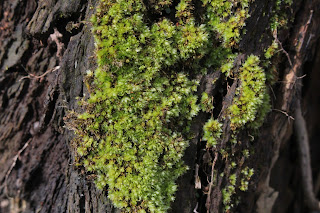At my first stop, my impression at first was that there were far fewer birds than yesterday. But after nearly an hour of looking, things started to look up, with several new migrants popping up, including Black-and-white Warblers, Pine Warbler, Eastern Towhees, many more White-throated Sparrows, a couple Hermit Thrushes, a Wood Thrush, and lots of Yellow-rumped Warblers. Nice to see some movement!
At my next stop, I was quite pleased to find more warblers, including all the aforementioned species and a Black-throated Green Warbler. A couple Blue-headed Vireos popped up, and so did an early Warbling Vireo. The trend of Hermit Thrushes and White-throated Sparrows continued. I was also quite pleased to find an Eastern Screech-owl, my second for the neighbourhood.
It started to rain quite heavily while I was out. I put up with it for about an hour, but eventually I decided to head home.
This evening I went back out for a short walk around some of my favourite haunts. I was pleased to finally see my first Field Sparrow of the year, as well as a White-crowned Sparrow. I managed to turn up the Virginia Rail, which I missed in the morning. There were lots of Amerocan Toads mating, and their calls were deafening!
Just before it got dark, I went to try and see the American Bittern which has been hanging around. It was there upon my arrival.
Looks like a lot of rain moving through the northeast tonight, so may put a damper on migration. Nevertheless, I seem to have a lot of time on my hands these days, so I'll be back out there! Things are heating up!




















































